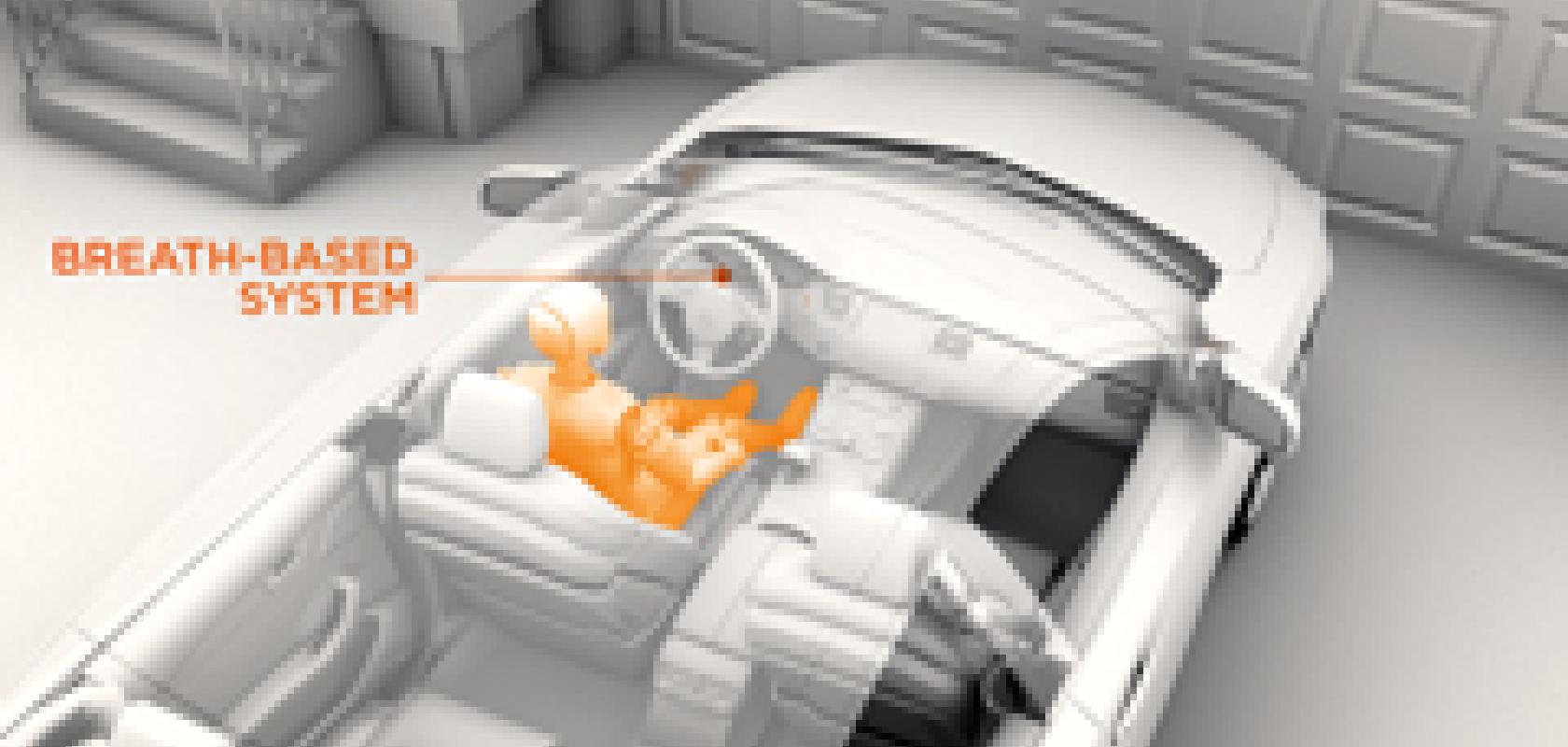A system that will prevent a car from moving if the driver is drunk is being developed by the US government. The technology, which could be installed into vehicles in the next five years, uses lasers and infrared light to determine a person’s blood alcohol level in less than one second.
The safety system is being developed as part of the Driver Alcohol Detection System for Safety (DADSS) programme, a research partnership between the US Department of Transportation’s National Highway Traffic Safety Administration (NHTSA) and an industry consortium, in a bid to develop technology that will prevent drivers from operating their vehicles while under the influence.
According to NHTSA reports, drink driving claims more than 10,000 lives per year in the United States, which represents more than one third of all motor vehicle traffic fatalities in the country.
At the beginning of June, NHTSA displayed prototypes of the two technologies under development – one that detects alcohol levels by touch, another by sensing the driver’s breath – to members of US congress, in order to show progress in maturing them for automotive use.
The breath-based technology, created by Swedish company Autoliv Development, pulls the driver’s exhaled breath into a sensor located in the driver’s side door or on the steering wheel. A beam of infrared light is then directed at the molecules in the breath and the reflected light is analysed. Because molecules of alcohol and those of tracers such as carbon dioxide absorb infrared radiation at specific wavelengths, the device can compare the two, and is able to measure alcohol levels even at very low concentrations.
If the proportion of alcohol molecules to CO2 molecules is above a certain range, it indicates an illegal blood alcohol level. The cabin airflow of the car is also engineered to ensure that only the driver’s breath is tested.
The touch-based system uses infrared tissue spectroscopy to determine the driver’s blood alcohol level. Touch sensors located on the ignition button or the gearstick shine a beam of infrared light onto the person’s finger, which penetrates through the skin into blood capillaries. The system then measures the light intensity of reflected particles to identify and analyse the quantity of alcohol molecules in the blood.
To ensure the speed, accuracy and precision of the device, the device doesn’t analyse all wavelengths, but focuses precisely on the two discrete wavelength sources that signal the presence of alcohol. This allows multiple readings to be taken in less than a second.
The touch-based system is being developed as part of a partnership between Takata, a Tier one automotive supplier, and TruTouch, a specialist in non-invasive near-infrared spectroscopy for alcohol sensing. In 2011, the two companies were awarded $2.25 million in funding from the NHTSA to advance the development of the system.
Other laser-based systems are being created to tackle the problem of drink driving. Last year, researchers from the Military University of Technology in Warsaw, Poland developed a laser device that can detect alcohol in cars. However, unlike the DADSS instrument which will be installed inside of a car, this system would be placed on the side of the road to scan passing cars at a distance. The system is also capable of recognising when passengers have been drinking but the driver has not, or if alcohol had been spilled in the vehicle.
The more recent DADSS programme is expected to be completed within the next five years, and will be made available as a safety option in new vehicles, much like automatic braking, lane departure warning and other advanced driver assist vehicle technologies.
‘Public-private research partnerships like DADSS have led to innovations that enhance our everyday lives, such as the internet, GPS and the microchip. Now we have our sights set on inventing a world without drunk driving,’ said Rob Strassburger, president and CEO of the Automotive Coalition for Traffic Safety (ACTS). ‘There’s more work to be done, but through this broad coalition of support, we are driven to successfully complete this life-saving technology.’
‘Education, awareness and enforcement have succeeded in dramatically reducing drunk driving fatalities, but the advanced technology of DADSS brings enormous potential to save even more lives,’ commented US Transportation Secretary Anthony Foxx.
 Jessica Rowbury is a technical writer for Electro Optics, Imaging & Machine Vision Europe, and Laser Systems Europe.
Jessica Rowbury is a technical writer for Electro Optics, Imaging & Machine Vision Europe, and Laser Systems Europe.
You can contact her on jessica.rowbury@europascience.com or on +44 (0) 1223 275 476.
Find us on Twitter at @ElectroOptics, @IMVEurope, @LaserSystemsMag and @JessRowbury.


